At BarBend, we’re big believers in getting a grip, both literally and figuratively. Your forearm muscles are essential for holding onto heavy objects — how else would you perform a deadlift otherwise? — and they also contribute to the overall appearance of your physique if you’re a bodybuilder.
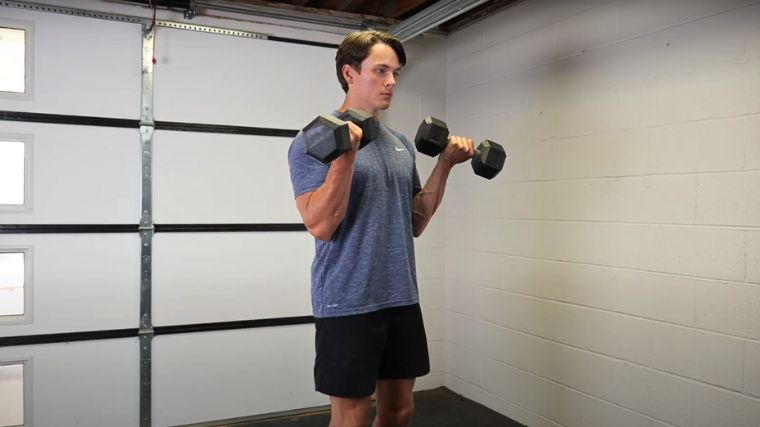
But forearm training can easily feel as tedious and tiresome as eating your vegetables (also necessary, believe it or not). If you want your forearms to be strong enough to hold onto any new 1-rep max and appear muscular and defined, you’re in good company. Here are the BarBend staff’s favorite picks for the best forearm exercises for mass, strength, and everything else.
Recent Updates: This article was revised by Alex Polish, certified personal trainer and Senior Editor at BarBend. Senior Writer Jake Dickson also revised the movement selections in the list to improve practicality and accessibility. Dickson holds a personal training certificate from the National Academy of Sports Medicine and a B.S. degree in Exercise Science.
11 Best Forearm Exercises
- Reverse Curl
- Behind-the-Back Barbell Wrist Curl
- Plate Pinch
- Towel Pull-Up
- Dumbbell Wrist Curl
- Hammer Curl
- Bottoms-Up Kettlebell Carry
- Zottman Curl
- Farmer’s Carry
- Chin-Up
- Bar Hang
Editor’s Note: The content on BarBend is meant to be informative in nature, but it should not be taken as medical advice. When starting a new training regimen and/or diet, it is always a good idea to consult with a trusted medical professional. We are not a medical resource. The opinions and articles on this site are not intended for use as diagnosis, prevention, and/or treatment of health problems. They are not substitutes for consulting a qualified medical professional.
1. Reverse Curl
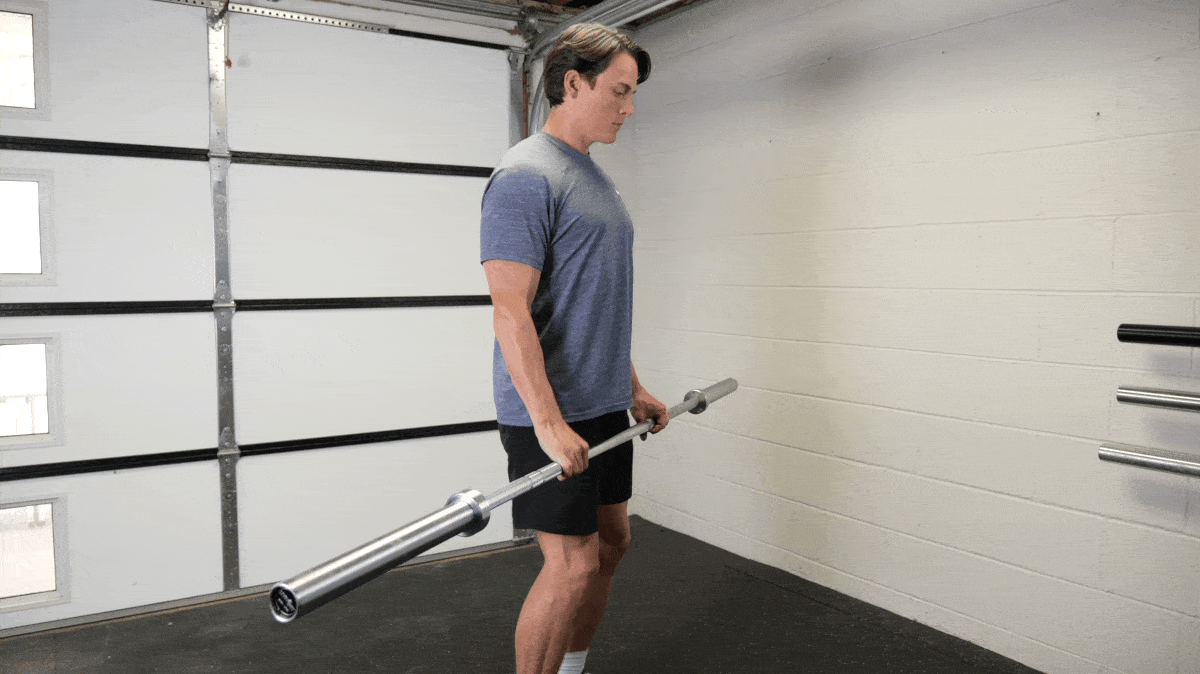
| Equipment Needed | Cambered (EZ-bar) barbell or straight bar, wrist wraps (optional) |
| Muscles Worked | Brachialis, brachioradialis, wrist extensors |
| Sets & Reps | 3-4 x 10-12 |
The reverse curl is a biceps curl variation that, well, takes your biceps almost entirely out of the equation. By turning your wrists over and curling a bar with a pronated grip, your biceps lose leverage to bend your elbow, forcing your larger forearm muscles to pick up the slack and work double-time to keep the bar clutched deep in your palms.
How To Do It
- Stand upright while holding the bar with a shoulder-width, double-overhand grip.
- Keep your upper arms tucked tightly to your sides and brace your core.
- Curl the weight up by bending your elbows until your forearms are at least parallel to the ground.
Modifications
- Make It Easier: Try performing this move on a preacher curl bench, doing only the top half of the range of motion.
- Make It Harder: Wrap two gym towels around the bar to thicken the shaft and make it harder to hold onto.
2. Behind-the-Back Barbell Wrist Curl
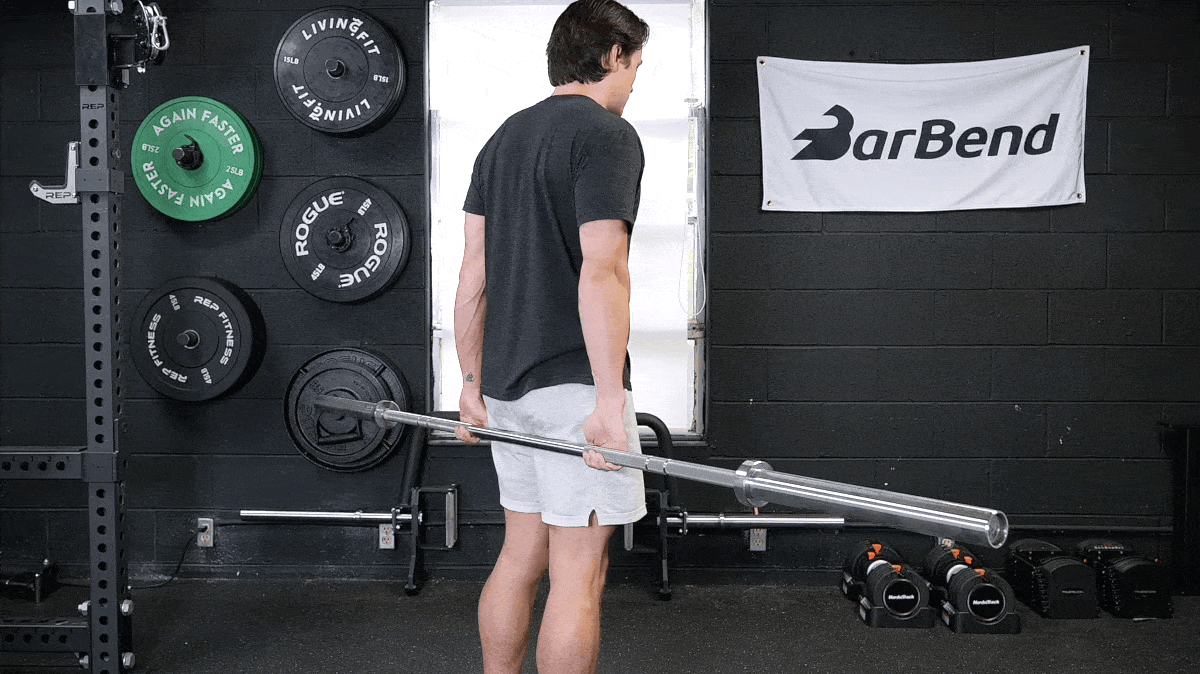
| Equipment Needed | Barbell, weight plates (optional) |
| Muscles Worked | Wrist flexors |
| Sets & Reps | 2 x 15-20 |
The behind-the-back wrist curl is one of the best forearm exercises for strength that you can do. It targets your forearm flexors and improves your finger strength simultaneously: Both are important for grip strength and improving your ability to grip it and rip it. A major advantage of this variation, as opposed to other options, is adding load in increments.
How To Do It
- Set up a barbell on a power rack around knee level and stand facing away from it. If you don’t have a rack or partner, balancing the barbell on a bench is an option.
- Bend down and grab the barbell with a shoulder-width grip, stand up straight, and engage your glutes.
- Let the barbell roll down to your fingertips, then curl the barbell back up and flex your forearms.
- Pause for a second in that flexed position before returning to the starting position.
Modifications
- Make It Easier: You can hold two dumbbells behind your back instead if the barbell causes discomfort.
- Make It Harder: Tie a resistance band around the middle of the bar and stand on the loose end to add some elastic tension.
3. Plate Pinch
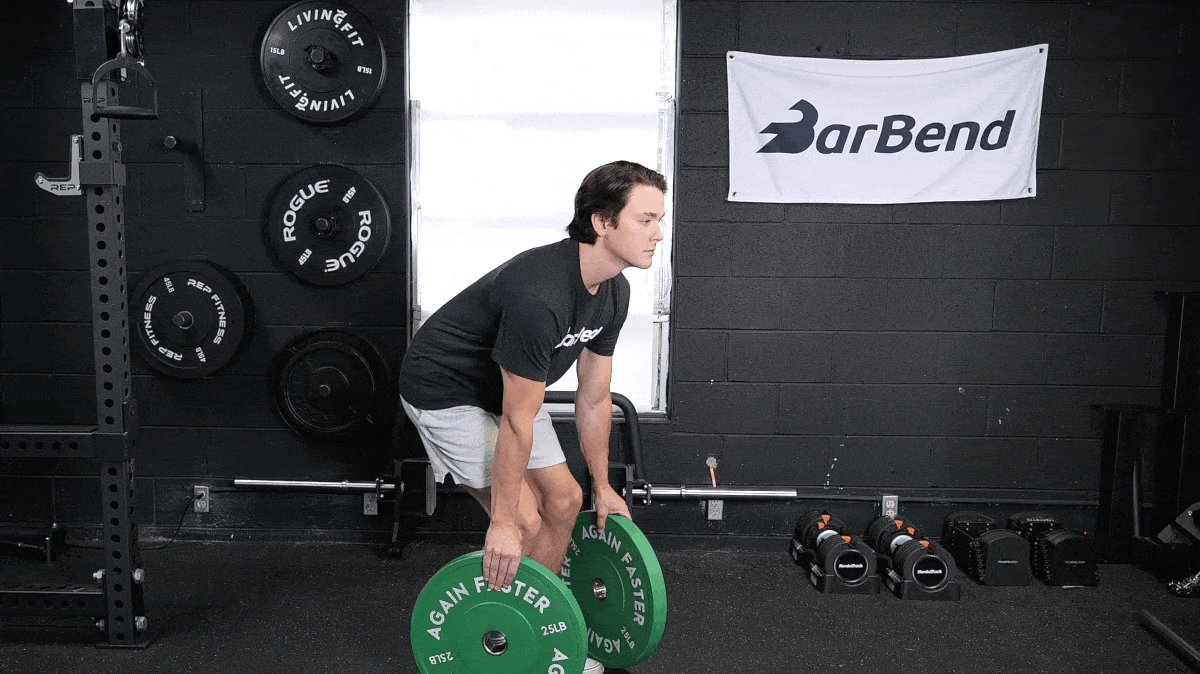
[Read More: The Best Grip Strengtheners On the Market]
| Equipment Needed | Weight plates |
| Muscles Worked | Finger flexors |
| Sets & Reps | 3 x maximum duration |
This is a great exercise for football players and wrestlers to improve their sport-specific grip strength, and it’ll translate well for powerlifters and strongman athletes, too.
How To Do It
- Hold a 25 or 45-pound bumper plate with your fingers, keeping your arms by your side, and hold for time.
- Alternatively, hold two or more 10-pound plates, smooth side out, and hold for time.
Modifications
- Make It Easier: Try this one with small change plates rather than full-size weight plates.
- Make It Harder: Try pinching full-sized bumper plates, or wrapping a towel around the edge of a steel plate.
4. Towel Pull-Up
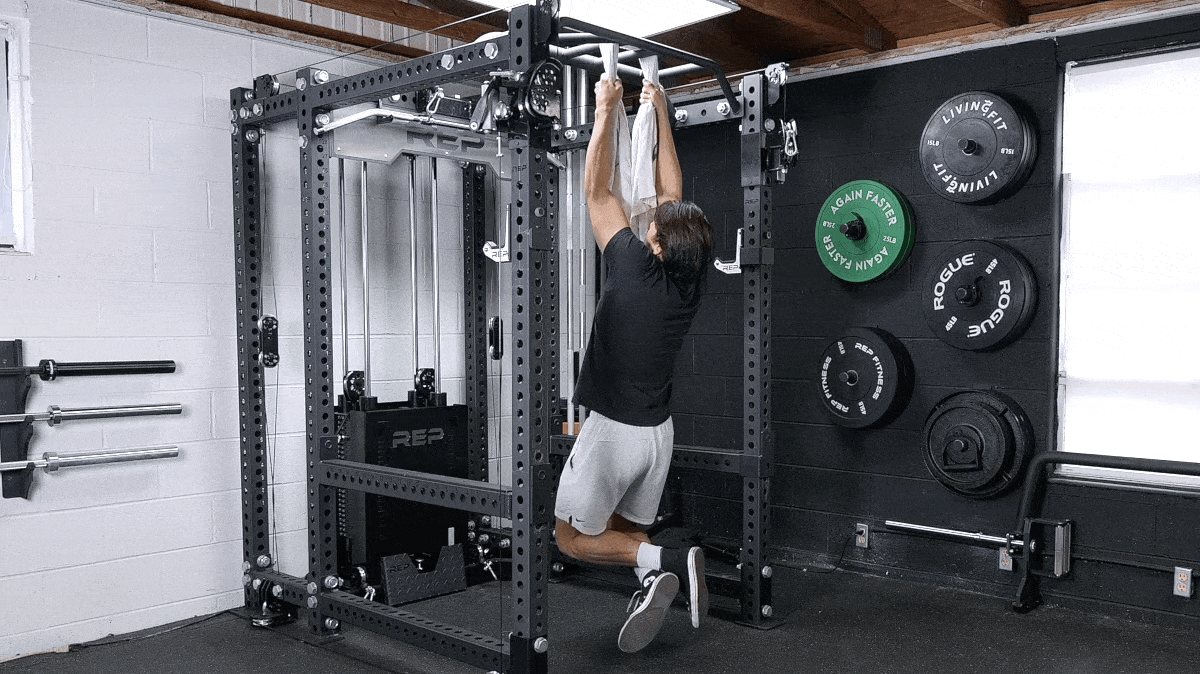
| Equipment Needed | Gym towel, pull-up bar |
| Muscles Worked | Lats, brachialis, brachioradialis, finger flexors |
| Sets & Reps | 2-3 x 5-8 |
If you do a lot of pull-ups, you might not consider them a forearm-building exercise, and you’d be right. But one simple change can flip the whole script.
“Hanging onto a towel instead of a pull-up bar basically doubles how hard your forearms have to work,” says Dickson. “It’s really, really hard to do towel pull-ups well.”
This version focuses on the forearms because of the neutral grip and the difficulty of holding and pulling up on the towel, which builds forearm strength and size while strengthening your back and biceps.
How To Do It
- You can use a single towel or two towels to do this. The single towel trains your forearms more, while the two-towel pull-up focuses more on your lats.
- Hold the towel midway up, using a firm grip.
- Perform pull-ups, keeping your shoulders down and chest up until you feel your grip failing.
Modifications
- Make It Easier: Try doing jumping pull-ups with the towel, gripping it as you slowly lower yourself down.
- Make It Harder: Add an isometric towel hold at the end of each set.
5. Dumbbell Wrist Curl
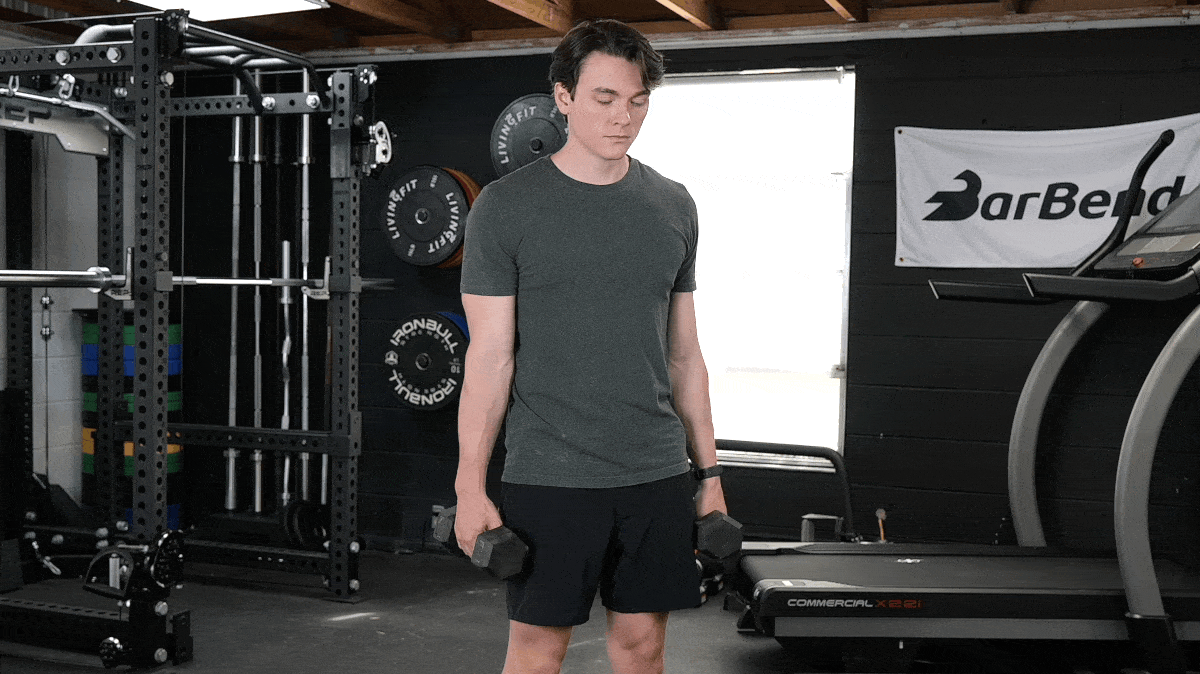
| Equipment Needed | Dumbbells |
| Muscles Worked | Wrist flexors |
| Sets & Reps | 2-3 x 15-20 |
The standard dumbbell wrist curl is a bread-and-butter dumbbell forearm exercise. This move will beef up the muscles on the inside of your forearm that help you flex your wrists. Dumbbells allow you to work each of your forearms independently, guaranteeing balanced stimulation.
How To Do It
- Stand upright while holding a pair of dumbbells at your sides with a neutral grip.
- Bend your wrists, curling your knuckles toward your body
Modifications
- Make It Easier: You can perform this exercise while sitting down if desired.
- Make It Harder: Allow the dumbbell handles to roll down into your fingertips at the bottom of each repetition to elongate the range of motion.
6. Hammer Curl
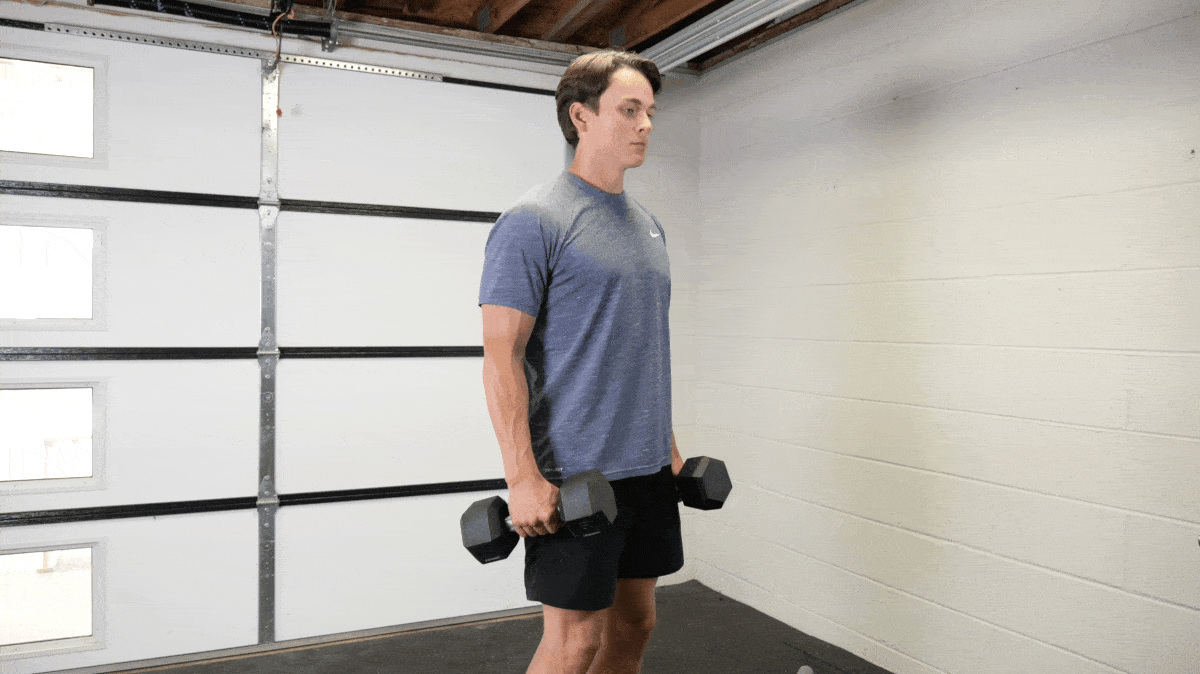
[Read More: Hammer Curls Vs. Biceps Curls — Which is Better for Building Bigger Arms?]
| Equipment Needed | Dumbbells, wrist wraps (optional) |
| Muscles Worked | Brachialis, brachioradialis, finger flexors |
| Sets & Reps | 3 x 6-8 |
Yes, another biceps curl made the list — but for good reason. The neutral grip of the hammer curl variation is friendlier on your elbows and shoulders than other curl variations. Plus, the neutral grip leads to extra recruitment of the forearm muscles and the important but neglected muscle the brachioradialis.
How To Do It
- Hold the dumbbells by your side with your wrists neutral.
- Keep your chest up and shoulders down.
- Maintain neutral wrists and curl until the dumbbells are near your anterior deltoid.
- Pause for a second, then slowly lower down to the starting position. Reset and repeat.
Modifications
- Make It Easier: You can perform this movement seated if you require additional stability, or cross your forearms in front of your torso to improve your leverage.
- Make It Harder: Try using Fat Gripz if you have them, or wrapping towels around the handles of the dumbbells.
7. Bottoms-Up Kettlebell Carry

| Equipment Needed | Kettlebells |
| Muscles Worked | Core, shoulders, forearms |
| Sets & Reps | 2-3 x 20 paces |
Holding a kettlebell bottoms-up is simple but not easy. The bottoms-up kettlebell carry will challenge your grip and forearm strength. You’ll flip the kettlebell upside down so the heavy portion sits above the handle and the horn sits on the meat of your hand.
[Read More: Bottoms Up Kettlebell Exercises to Improve Lifting Technique]
This forces you to recruit additional muscle fibers and motor units to control the unstable load. Bottoms-up carries can improve your posture, lateral stability, grip, and forearm strength while strengthening the entire shoulder joint.
How To Do It
- Facing a clear walking path, stand up straight and hold a kettlebell in one hand.
- Curl the kettlebell in front of your shoulder to chin height. Make sure the horn is sitting in the meat of your hand — the bottom of the bell should be facing the ceiling.
- Keep your wrist in neutral and your elbow bent at 90 degrees.
- Grip tight and walk slowly for the specified distance.
- Lower the weight and switch hands. Reset and repeat.
Modifications
- Make It Easier: Practice some standing marches with the kettlebell held in the bottoms-up position before performing actual steps.
- Make It Harder: Hold two kettlebells at the same time.
8. Zottman Curl

| Equipment Needed | Dumbbells |
| Muscles Worked | Biceps, brachialis, brachioradialis, wrist extensors, finger flexors |
| Sets & Reps | 3-4 x 10-12 |
The Zottman curl is like a dumbbell curl but with a literal twist. You’ll do a regularly-scheduled curl with your palms facing up on the concentric portion of the lift. Then, during the lowering component of the curl, you’ll rotate your hands so that your palms are facing down. This rotation transforms the latter half of the lift into a reverse curl. Slow it down for extra time under tension, which will light up your forearms.
How To Do It
- Stand tall with a dumbbell in each hand.
- Slowly curl the bells up with your palms facing you.
- At the top of the curl, rotate your palms until they’re facing down.
- Slowly lower the weights to the bottom position of the curl.
- Rotate again so that your palms are facing up. Repeat for reps.
Modifications
- Make It Easier: Perform this move seated instead of standing, or use one arm at a time while you get the hang of it.
- Make It Harder: Pause at each portion of the exercise; at the top, middle, and bottom.
9. Farmer’s Carry

| Equipment Needed | Dumbbells, kettlebells, or trap bar frame |
| Muscles Worked | Traps, core, forearms |
| Sets & Reps | Traps, core, forearms |
The beauty of the farmer’s carry is that you can load up pretty much as heavy as you can handle with good form. As long as you can keep it in your grasp and maintain your posture and stride, high weights are very fair game.
“You can perform farmer’s carries with pretty much any equipment you’d like,” Dickson remarks. “Kettlebells or dumbbells with a fat grip, specialized farmer’s walk handles, barbells, or even sandbags all work.” The more deliberate variety you’re giving your forearms, the better.
How To Do It
- Grip the implement of your choice.
- Stand tall with your hands on either side of your body.
- Keep your shoulders back and down and brace your core.
- Walk with a steady stride for the prescribed time or distance. Rest and repeat.
Modifications
- Make It Easier: Try standing holds without walking to get a feel for the tension on your forearms and upper back.
- Make It Harder: Thicken the shaft of whatever you’re holding by wrapping gym towels or using Fat Gripz.
10. Chin-Up
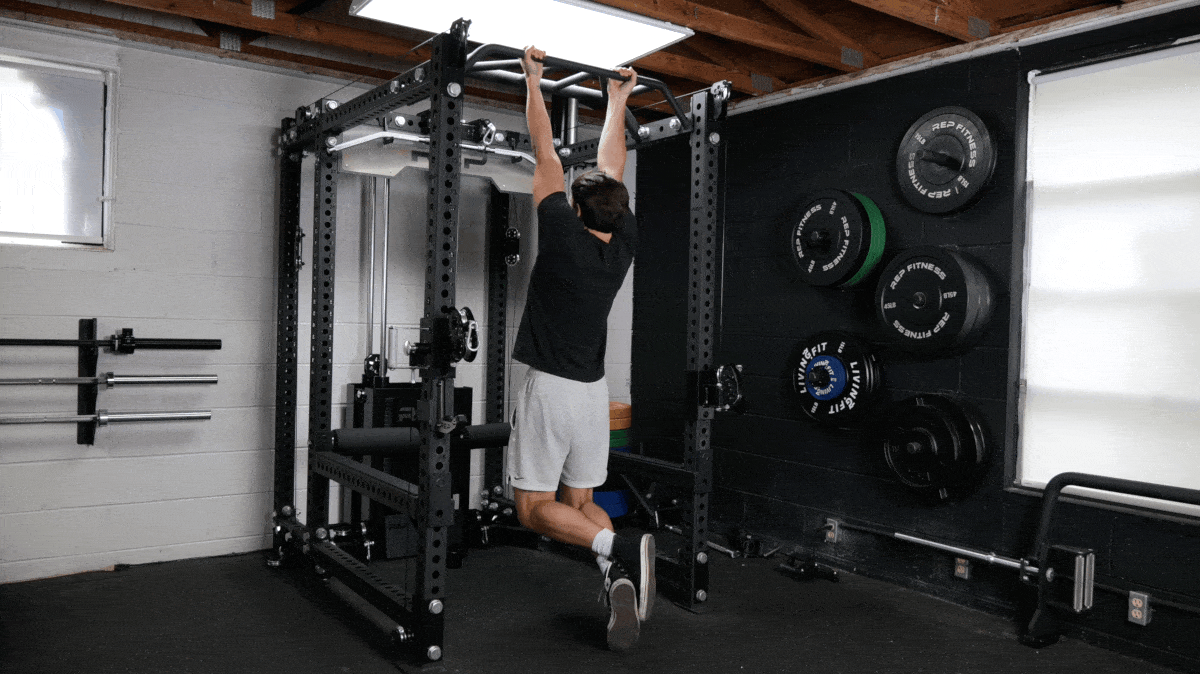
| Equipment Needed | Pull-up bar, dip belt (optional) |
| Muscles Worked | Biceps, brachialis, forearms |
| Sets & Reps | 2-3 x 10-15 |
The chin-up is an all-purpose strength and muscle-builder — especially when you want to develop those forearms. If you focus only on moves that isolate your forearms as much as possible, you might stimulate growth. But you need those full-body moves to build a solid foundation.
Adding chin-ups to your forearm-building routine ensures that you are developing an underlying base of strength and stability in your arms. Yes, your grip will be scorched — but you’ll also reap the full-body benefits, too. This makes it one of the best biceps exercises that targets your forearms.
How To Do It
- Grab a pull-up or chin-up bar with your palms facing toward your body. Keep your hands a little closer than shoulder-width apart.
- Brace your core, pull your shoulders back and down, and initiate the pull with your upper back.
- Pull until your chin clears the bar.
- Slowly lower down to the starting position. Repeat.
Modifications
- Make It Easier: Use the assisted pull-up machine to help you support your weight until you can perform regular chin-ups.
- Make It Harder: Add weight by holding a dumbbell between your ankles or wearing a plate-loaded dip belt.
11. Bar Hang
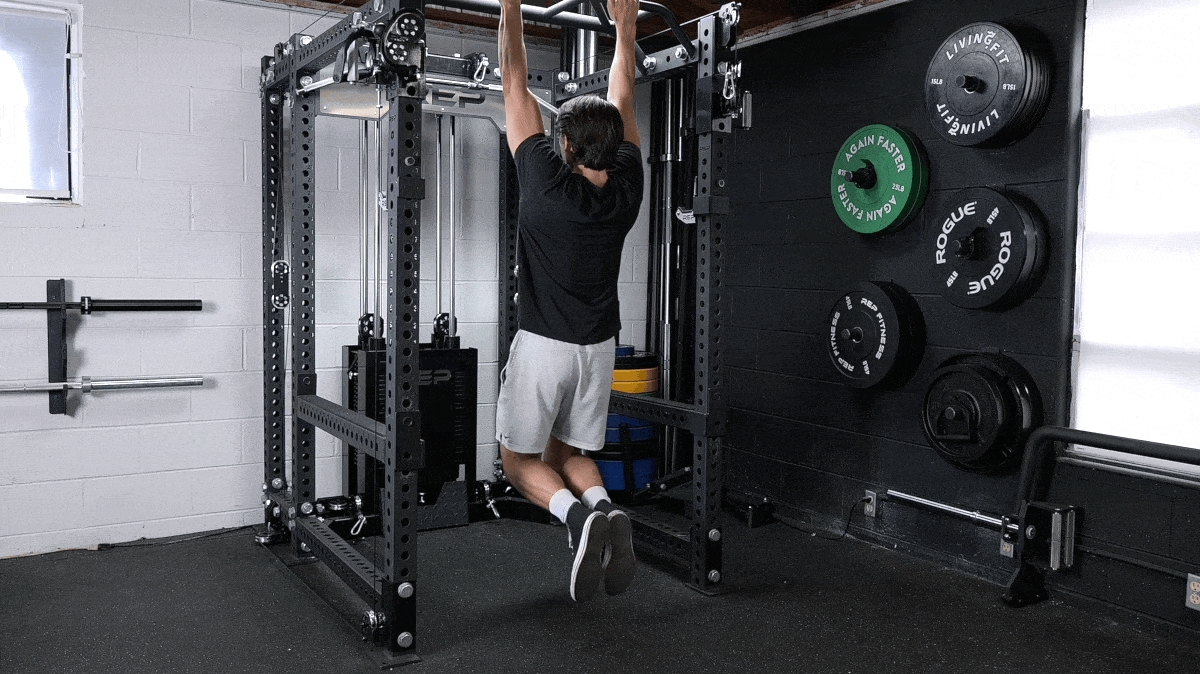
| Equipment Needed | Pull-up bar |
| Muscles Worked | Forearms |
| Sets & Reps | 3 x 30+ seconds |
You don’t need all that much technical skill for this one — but it’ll build a lot of physical and mental grit, for sure. To perform a bar hang, you’ll hop up to a pull-up bar, and hang. No, it’s not quite that simple. You’ll want to keep your shoulders back and down and your core engaged to make sure you’re maximizing the full-body benefits and functionality of this move.
You don’t need to keep a reverse hold on the bar to do this one. A regular grip will do just fine. The idea is that you’re going to stay hanging on the bar as long as you can. Your forearms will be a principal part of helping you stay on because this is all about grip strength.
How To Do It
- Use a step or jump up to grab onto the bar.
- Keep your shoulders back and down and make sure your core is engaged.
- Hold onto the bar for as long as you can.
Modifications
- Make It Easier: You can use lifting straps in the very beginning to help acclimate your body to the sensation of hanging, but ditch them as soon as possible.
- Make It Harder: Try some single-arm hangs once you can hold your body weight for several minutes at a time.
4 Forearm Workouts To Try
You can get a good forearm workout through a day’s worth of manual labor. Or, more realistically, in 15 to 20 minutes in the weight room. Here are a few different ways to combine different forearm-building exercises together to suit your fitness needs:
Forearms Warm-Up
Your forearms aren’t the biggest muscle group out there, but you’ll still want to activate and warm them up before you dive into the intensity of forearm training. By preparing your joints for activity, you’ll be setting your forearms up for greater health and success.
Try this quick forearm warm-up:
| Exercise | Sets | Reps |
|---|---|---|
| Wrist Roll | 1-2 | 20 per side |
| Reverse Wrist Roll | 1-2 | 20 per side |
| Wrist Wave | 1-2 | 15 per side |
| Wrist Prayer | 1-2 | 15-20 |
| Single Finger Touch | 1-2 | 5 touches per finger |
Forearm Workout for Strength
When it comes to strength training, the adage of heavy loads and low reps still apply to forearms (though this doesn’t mean you should exclude other set and rep schemes for your forearm training.)
If the goal is to improve your grip strength, you should specifically add some heavy static grip work along with traditional movements. We think this is one of the best forearm workouts you can do: Start with two workouts per week and then work your way up to three and possibly four if forearm development is a top priority.
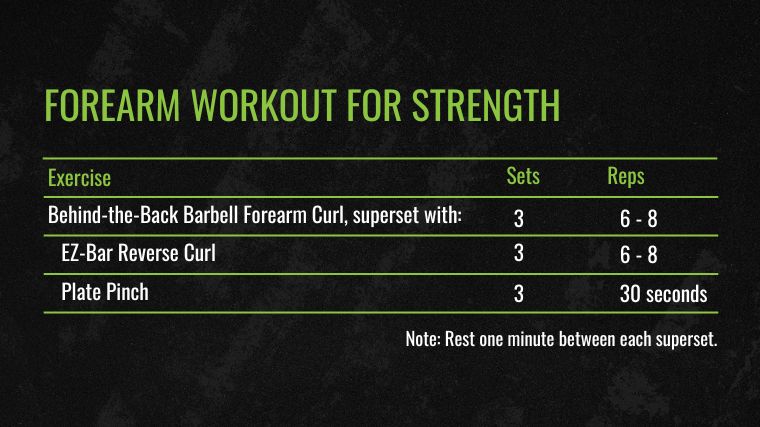
- Behind-the-Back Barbell Forearm Curl: 3 x 6-8
Superset with:- EZ-Bar Reverse Curl: 3 x 6-8 reps
- Plate Pinch: 3 x 30 seconds
Note: Rest one minute between each superset.
Forearm Workout for Muscle
If more prominent and muscular forearms are on the docket, volume and isolation are in order. More volume, reps, and shorter rest times will generate higher muscle fiber recruitment and fatigue your forearms to stimulate more growth.
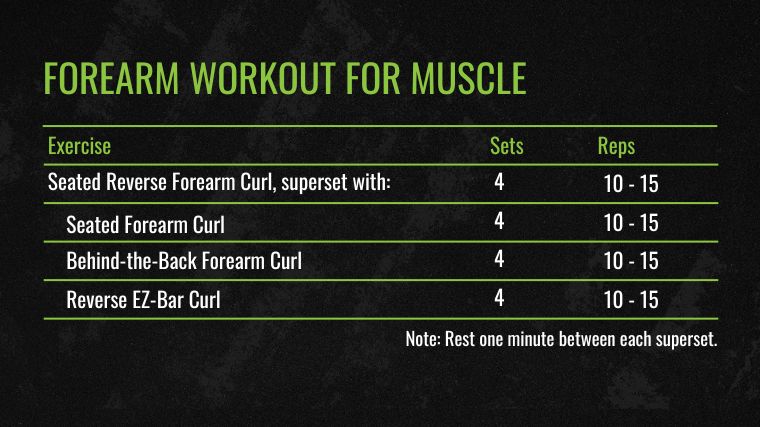
- Seated Reverse Forearm Curl: 4 x 10-15
Superset with:- Seated Forearm Curl: 4 x 10-15
- Behind-the-Back Forearm Curl: 4 x 10-15
- Reverse EZ-Bar Curl: 4 x 10-15
Note: Rest one minute between each superset.
Forearm Workout for Endurance
Isolation work isn’t fancy (and it certainly doesn’t feel great), but if you’re looking to bolster your forearm endurance, then it should have a place in your workout program. Some lifters complain of their grips just fatiguing too much or simply giving out.
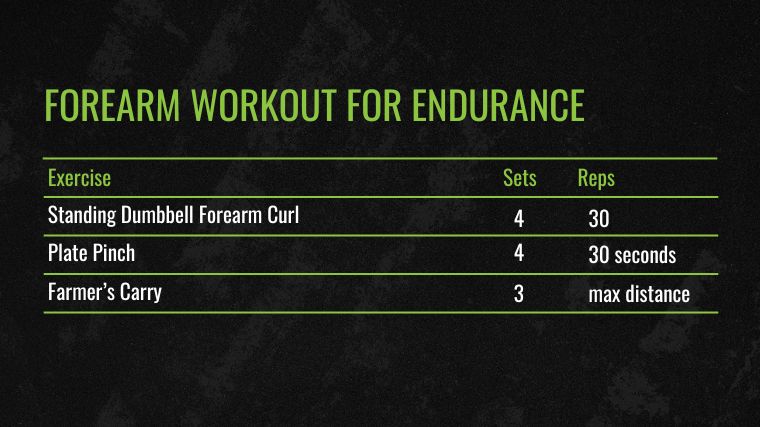
- Standing Dumbbell Forearm Curl: 4 x 30 reps
- Plate Pinch: 4 x 30 seconds
- Farmer’s Carry: 3 x max distance
Dumbbell Forearm Workout
Dumbbell forearm exercises work great because they’re simple, straightforward, and accessible — you can find a rack of “DBs” in just about every gym (we think a pair of adjustable dumbbells is a must-have for any home gym as well). Below, you can find our favorite forearm-building exercises with dumbbells packaged together into a workout:
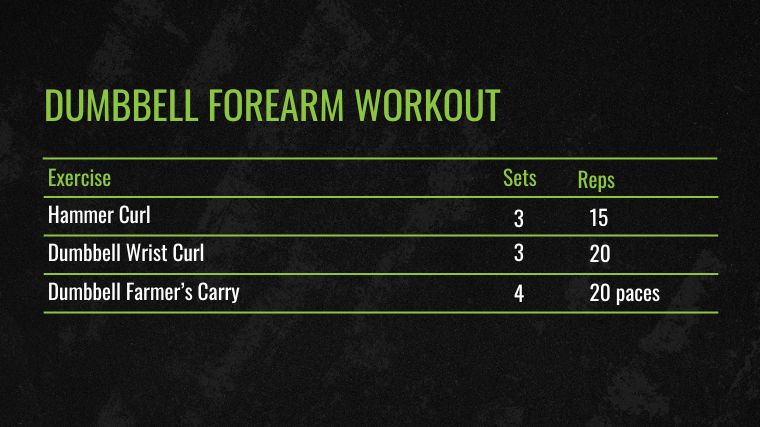
[Read More: The Best Mobility Exercises From a Physical Therapist (+ Tips)]
- Hammer Curl: 3 x 15
- Dumbbell Wrist Curl: 3 x 20
- Dumbbell Farmer’s Carry: 4 rounds of 20 paces
What Muscles Make Up the Forearms
The forearms have many small muscles with varying fiber types, but most forearm muscles are slow-twitch dominant, meaning they are difficult to add size and strength. Here’s a breakdown of the major forearm muscles.

- Extensor Carpi Radialis Brevis: This muscle is on the thumb side on the back of the forearm, which originates on the posterior lateral humerus and inserts on the third finger. It’s a strong wrist extensor and is involved in wrist hyperextension.
- Extensor Carpi Radialis Longus: This long muscle on the back of the forearm extends and radially flexes the wrist. It originates on the lateral epicondyle of the humerus and inserts on the base of your second finger.
- Extensor Carpi Ulnaris: This is a muscle on the ulnar (little pinkie) side on the back of the forearm, which originates on the lateral humerus and inserts on the little pinkie. Its functions are wrist extension and wrist hyperextension.
- Flexor Carpi Radialis: Here, you have a superficial muscle on the thumb and the palm side of the wrist. It flexes the wrist and originates on the medial humerus, and inserts on the second and third fingers on the palm side.
- Flexor Carpi Ulnaris: This superficial muscle on the ulna (little pinkie) side originates from two places, the medial humerus and the back of the ulna bone. It inserts on the base of the fifth finger and flexes the wrist to the little pinkie side.
- Flexor Digitorum Superficialis: This is the largest muscle of the superficial anterior forearm muscles and originates in three places — the medial humerus and the ulnar and radial bone heads. Then, it splits into four tendons, inserting on each of the four fingers.
- Brachioradialis: A long narrow muscle that originates on the lateral humerus on inserts on the radial side of the wrist. This muscle is a strong elbow flexor and forearm supinator.
- Pronator Teres: This muscle crosses the elbow and forearm and originates in two places, the medial humerus, and the ulna bone. It inserts on the middle lateral surface of the radius and is a strong forearm pronator, and is involved in elbow flexion.
Benefits of Training Your Forearms
Even if you do want massive forearms, there are other important benefits of directly training your forearms besides vanity. “Improving your forearm strength also improves grip strength,” says Dickson. “Grip strength is a common measurement of overall muscular health, so you don’t want to slack off on it.”
“If forearm hypertrophy is most important to you, train them first on a leg or push day so they’re prioritized and don’t take away from your other work,” Masi recommends.
Improved Quality of Life
Grip strength was not only inversely associated with all-cause mortality—every 5-kilogram decrease in grip strength was associated with a 17 percent risk increase in mortality. (1)
[Read More: Build Your Own Iron Paradise With The Best Home Gym Equipment]
A reduction in grip strength (if not trained) is associated with an eightfold risk of developing muscular disability among older adults. Poor grip strength has also been associated with adverse weight gain among women and mortality among men. (2)
Increased Functional Fitness
Strong forearms are the key to having a good grip, not only for grip-intensive exercises like the deadlift and row variations but for your daily activities, too. You use your grip strength to open pickle jars and doors, hold drinks, and carry the groceries in from the car. Plus, they’re handy for picking up heavy stuff from the floor.
Enhanced Performance
Grip strength can be a limiting factor with grip-intensive exercises such as rows, chin-ups, and deadlift variations. When you improve grip strength, you can do more reps with the same weight or more weight period. After all, you are only as strong as your weakest link.
Frequently Asked Questions
How can I grow my forearm muscles?
The same way you’d build any other muscle group; consistent effort, time, and patience. Performing forearm-focused exercises like wrist curls and extensions are a starting point, but you can also rely on some of the best arm exercises out there like hammer curls to get the job done as well.
Should I train my forearms every day?
Your forearms are designed to take a real beating, but you shouldn’t train them with weights on a daily basis. You need your forearm muscles to perform all sorts of tasks in your daily life, so stick to a workout frequency of 2 to 3 times per week.
Do push-ups work forearms?
Not really. Push-ups are an upper-body calisthenics training that work your pecs, shoulders, and triceps. However, to perform push-ups you need to place your palms flat on the ground, which will significantly stretch the muscles on the underside of your forearms.
References
- Leong, D.P., et al. Prognostic value of grip strength: findings from the Prospective Urban Rural Epidemiology (PURE) study. The Lancet 386, 266-273 (2015).
- Mark D Peterson. et al Low Normalized Grip Strength is a Biomarker for Cardiometabolic Disease and Physical Disabilities Among U.S. and Chinese Adults. Multicenter Study J Gerontol A Biol Sci Med Sci2017 Oct 12;72(11):1525-1531. doi: 10.1093/gerona/glx031.
Featured Image: Dragon Ima / Shutterstock